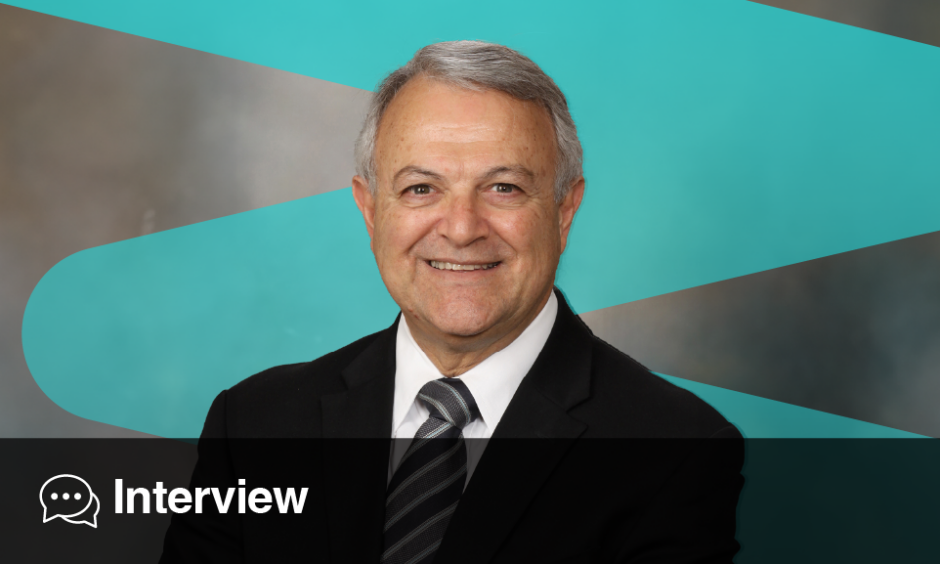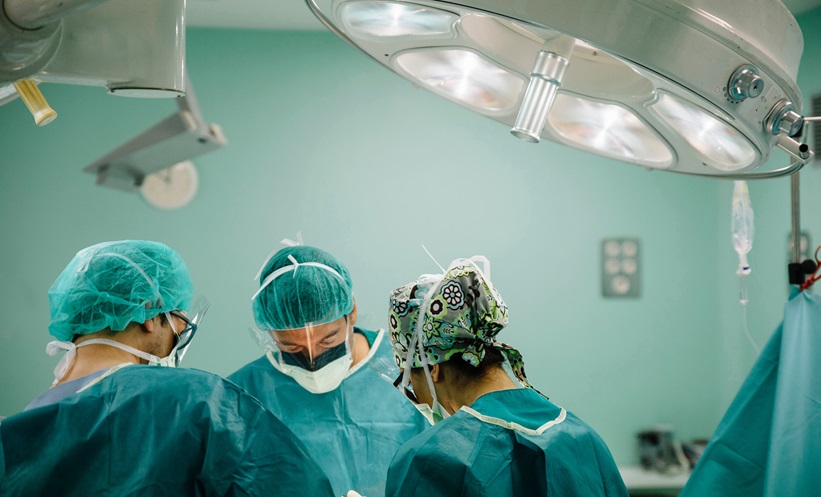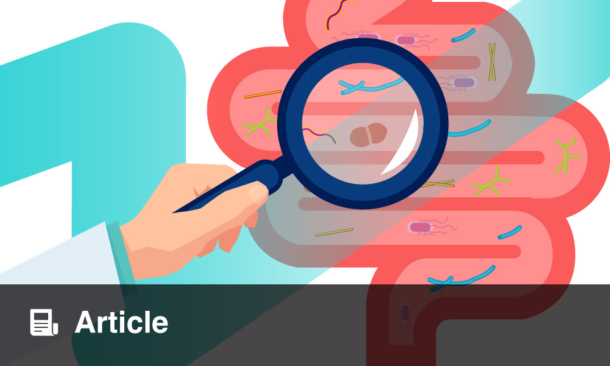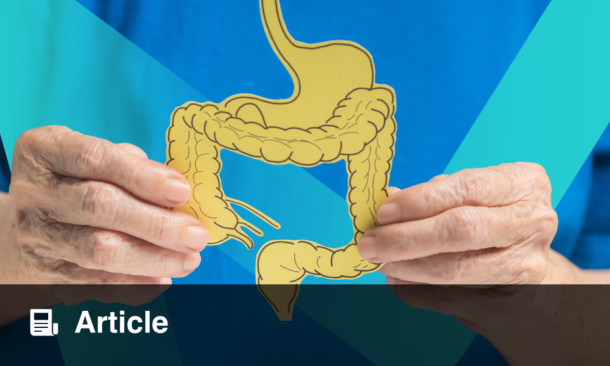Michael Camilleri | Professor of Medicine, Pharmacology, and Physiology, Mayo Clinic College of Medicine and Science; Consultant in the Division of Gastroenterology and Hepatology, Mayo Clinic, Rochester, Minnesota, USA
Citation: EMJ Gastroenterol. 2024;13[1]:61-67. https://doi.org/10.33590/emjgastroenterol/XWYQ1015.
![]()
What initially sparked your interest in gastroenterology, and motivates you to continue working in this field today?
I was very stimulated while I was still a medical student at the University of Malta, which is where I was born. I was exposed to a professor of surgery named Victor Griffiths, who instilled in me an interest in gastrointestinal pathophysiology. The mid-1970s was a time when there was still a lot of surgery being performed for peptic ulceration, which involved cutting the vagus nerve, truncal vagotomies, and then highly selective vagotomies. We used to do these operations almost every week on patients with chronic peptic ulcers because this was a time before we had medications like H2 receptor antagonists or proton pump inhibitors. Of course, there were pathophysiological consequences that resulted from the operations done for peptic ulceration. That immediately caught my attention when I was an undergraduate student, and then I was very fortunate to receive a Commonwealth Scholarship. So, I went to the Hammersmith Hospital in London, UK (at the time also called the Royal Postgraduate Medical School), where I trained for 6 years. I was exposed to incredible mentors; Vint Chadwick, Humphrey Hodgson, and Tim Cox are three that immediately come to my mind, and they had such a big influence on my continued interest in gastroenterology. They impressed upon me the importance of understanding the mechanisms underpinning gastrointestinal and liver diseases, and that has continued to be a very important part of my academic activity.
Then I was fortunate to come to the Mayo Clinic, initially just for a research fellowship, where I was exposed to two other great mentors: Juan-Ramon Malagelada and Sid Phillips. This was at the Gastrointestinal Research Unit at Mayo, which was revolutionising how we study gastrointestinal motility and neurophysiology as it applies to humans in vivo. These spheres of study continue to attract or dominate my attention. Thus, I continue to be a student of gastroenterology and of the mechanisms that cause gastrointestinal diseases.
Enteric neurosciences and gut neurohormonal activity are key areas of your expertise. Can you tell us more about your work on disorders of gut–brain interactions, and the current status of pharmacotherapies to treat these disorders?
This is a very logical extension of my good fortune of being trained in these areas. Nowadays, we talk about disorders of gut–brain interaction. And indeed, there is an interaction between the gut and the brain because, ultimately, we can only feel things because our brain senses them, but our focus has been predominantly on what’s happening in the digestive tract. Indeed, we’ve learnt that there is much that we can do, not only to diagnose but also to treat patients with therapies that are directed at the gastrointestinal tract. Let’s just start off, for instance, with our focus on gastrointestinal motor function. The physiology and pathophysiology of the gut depends also on the nerves that go from the brain and the spinal cord to the gastrointestinal tract, that is the extrinsic or autonomic nervous system. So, we have appreciated the importance of vagal function, to which I was introduced during the era of vagotomy and peptic ulceration, and also the other mechanisms that result in the pathophysiology of gut function.
We also have a major interest in and continue to study problems related to diarrhoeal diseases, particularly the role of bile acids and gastrointestinal hormones in the development of chronic diarrhoeal diseases.
We also appreciated that feeling full after a meal and the function of the stomach is extremely important for satiation and weight gain, and this gastric function is dependent upon the increase in hormones that feedback not only on blood glucose control and appetite but also the effects of the same incretin hormones on how the stomach empties food. Slower emptying from the stomach can be beneficial because it may help people eat less as they feel fuller postprandially. On the other hand, it may be that these hormones can sometimes cause adverse effects, like nausea, vomiting, and postprandial fullness, which have an impact on how patients receiving these medications present to us as doctors.
In summary, all of these studies, which emanate from understanding the gastrointestinal pathophysiology, whether it’s originating from dysfunction of the muscle, the nerves, or the chemicals produced by the body, like bile acids or hormones, ultimately have an impact on the symptoms that arise. And these symptoms are very commonly encountered in the clinic: diarrhoea; constipation; symptoms suggestive of gastroparesis; and not feeling excessively full after eating, and therefore, gaining weight because we eat more.
The corollary of this greater understanding of pathophysiology is that there have been incredible advances in the treatment of these conditions over the last two or three decades. For instance, with the treatment of constipation, we now have medications that induce the secretion of water into the small intestine or colon, or we have medications that stimulate the colon to function. I was specifically involved in the early studies documenting the proof-of-concept of medications like lubiprostone and linaclotide, both of which are secretagogues; and prucalopride, which is a prokinetic of the colon.
With regard to diarrhoeal diseases, we did the original studies that demonstrated the efficacy of the 5-HT3 antagonist alosetron.
We did the proof-of-concept studies regarding the 5-HT4 agonist cisapride for gastroparesis and chronic intestinal pseudo-obstruction when I was a fellow in the 1980s. Subsequently, we studied a cousin of cisapride, called prucalopride, and showed that it also worked in the colon and was approved for treating chronic idiopathic constipation. Finally, we studied incretin receptor agonists, amylin analogues, and dipeptidyl peptidase 4 in obesity, and we now know how important the glucagon-like peptide 1 (GLP-1) receptor agonists are in the management of obesity and its comorbidities.
You are also particularly interested in appetite and obesity. What is the role of the stomach in appetite regulation and obesity? Can you tell us more about the role of GLP-1 receptor agonists in weight loss?
One of the wonderful opportunities I’ve had over the years is to interact and go across specialties, divisions, or departments. Here at Mayo Clinic, there’s a wonderful legacy of cross-disciplinary research, and I was very fortunate to work with endocrinologists, specifically, Robert Rizza and Adrian Vella. More than 20 years ago, we did studies on the effects of the hormone itself, GLP-1 on gastric function. When we administered pharmacological doses of this hormone, we appreciated that the emptying of the stomach, in healthy humans, and in people with diabetes, was delayed. We also showed that this was very much dependent on the vagus nerve, which again, is the nerve that connects the stomach to the brain. That’s also important because the brain then connects back to the stomach through the same vagus nerve to induce the stomach to empty. We know GLP-1 has a very important effect on appetite, and we know it is very important for insulin secretion to control blood sugar.
Subsequently, we’ve done studies with the GLP-1 receptor agonists exenatide and liraglutide and showed that these are associated with a significant delay in gastric emptying in non-diabetic obese participants. In the randomised placebo-controlled trial of liraglutide, we also found that the effect on stomach emptying contributes to about 25% of the total weight loss that occurs in patients treated with that specific GLP-1 receptor agonist. Does it also apply to other agents? We don’t know because we haven’t studied it. But as a proof of principle, it appears that the delay in gastric emptying is a significant factor. We also found that people who started with faster stomach emptying at baseline had the greatest degree of weight loss among people with obesity. This research links, in my mind, the importance of stomach function in relation to the development of obesity because of reduced satiation, and the opportunity to change how that stomach works to induce more weight loss through slowing of emptying.
Could there be a genetic cause behind patient response to these medications?
There could certainly be a genetic cause. We tried to see whether there was a genetic variation in the GLP-1 receptor, which is the target receptor of these medications, explaining why there was a different level of weight loss in response to that medication. With a sample size of about 65 patients treated with liraglutide that we could study, we were not able to show a significant effect. On the other hand, it is conceivable that some of the factors associated with the genetics of obesity may be impacting the degree to which that weight loss will occur, or, conversely, the degree to which weight gain occurs. Hopefully, in the future, there might be ways in which one can predict from genetic studies who might be better candidates for treatment with this and other classes of medications.
You study novel approaches for the treatment of gastroparesis and dyspepsia. Can you tell us a bit more about the latest therapeutics in this field, such as ghrelin receptor agonists and 5-HT4 agonists?
Let’s briefly touch upon the 5-HT4 receptor agonists. Cisapride is a medication that we studied in the 1980s, and it really was highly effective in terms of the treatment of gastroparesis, and also for symptoms arising from the small intestine in chronic intestinal pseudo-obstruction. Unfortunately, very rarely, there are cardiac side effects with that medication, and that led to its withdrawal. We’re hoping that newer types of medications in the same class, which have greater safety from a cardiac standpoint, may be coming on the scene. They help to improve patients’ symptoms, and for a couple of these, we’ve already studied the proof of concept, such as velusetrag and naronapride, both of which accelerate either gastric emptying, or gastric emptying and colonic transit in humans, even in patients with constipation. There’s hope that this class of medication might still be helpful to patients.
The next class is the ghrelin agonists, and we were very excited because proof-of-concept studies with relamorelin showed that it accelerated gastric emptying and stimulated contractile activity of the stomach to facilitate stomach emptying. There have been three Phase III studies that, according to clinicaltrials.gov, where results have been made public, failed to reveal clinical benefit. Unfortunately, the company made the business decision to stop the development of that medication for the indication of gastroparesis, so I don’t know whether that’s going to move forward.
Another class of medications are the neurokinin-1 (NK-1) antagonists, and there is one that’s already approved for chemotherapy-induced emesis, called aprepitant. That same medication was associated with reduced nausea-like symptoms in patients with gastroparesis. Tradipitant, a new NK-1 receptor antagonist, will be reviewed for possible approval by the FDA in September 2024. The Phase III clinical trial data have been published.
And then finally, we had a National Institute of Health (NIH) grant to study cannabidiol, which is a combination cannabinoid receptor 1 and 2 modulator. We studied it in placebo-controlled clinical trials in patients with dyspepsia and in patients with gastroparesis. The latter trial suggested that there is a marked improvement in patients’ symptoms, reduction in vomiting episodes, ability to take a full meal, etc. It appears that this might be a promising approach, which needs to be replicated beyond this single-centre study at Mayo Clinic in about 45 patients. So, this trial result has to be replicated, to see whether it can go forward.
What would you currently say are the main hurdles to the clinical approval of these novel therapeutics? Is it the side effects?
The side effects are definitely important, but also, before you consider the safety, you’ve got to make sure that they’re efficacious. One of the nice things that’s happened in the field of gastrointestinal motility is that there are now approved patient response outcomes for many of these conditions, and the regulatory agencies, such as the European Medicines Agency (EMA) or the FDA here in the USA, have given guidance on how to do the studies in Phase III, to document the benefits from a patient response outcome perspective. In other words, guidance is to document not ‘Does the stomach improve?’ but ‘Do the patient’s symptoms really improve?’ I think that keeps the patient as the focus of the trials, and I applaud that approach. I also believe that proof-of-concept trials based on physiological endpoints (e.g., motility, transit) are essential to determine whether Phase II and III trials are warranted, and often provide useful information about the dose to be tested.
On average, 25% of all patients who present to gastroenterologists are suffering from irritable bowel syndrome (IBS) or chronic constipation. How important are lifestyle and dietary factors in the management of these conditions?
It’s a very important question, and it’s not only for gastroenterologists but even for primary care physicians. I once read that 10% of patients seen in primary care actually have these conditions. So, at a population level, it’s very, very important.
First things first, lifestyle and dietary factors are very logical first steps in the management of these patients. We know, things like trying to avoid unnecessary stress, and increasing the fibre content of the diet (e.g. 12–20 g of dietary fibre per day) will help to avoid constipation. Constipation is an extremely common problem in the general population, affecting 25% of the population, as mentioned. Now, there’s been a lot of hype and information in the public domain about FODMAPs (fermentable oligosaccharides, disaccharides, monosaccharides, and polyols). These are disaccharides or monosaccharides that may not be well digested, and that result in bloating, abdominal pain, discomfort, and sometimes diarrhoea.
Our approach regarding FODMAPs is rather more selective. Rather than saying that we need to stop all of these types of sugars, we really focus on two main classes. We’re aware that about two-thirds of the world’s population may have an intolerance to lactose. So, it makes sense to enquire about lactose intolerance when we’re seeing patients. That’s the first thing we ask about. The other thing we know from work done at the University of Minnesota, 75 miles north of where I am here in Rochester, Minnesota, USA, is that if you take patients with lactose intolerance who have a proven hypolactasia due to genetic defect, and you give them lactose in the form of milk, but you give them small amounts of milk every day, you don’t end up with the severe symptoms. If, on the other hand, you give all of that lactose in one setting or one meal, then they’re going to develop the symptoms. We therefore teach patients how to take lactose, and if necessary, we can also manage the intolerance by supplementing the enzyme lactase.
That’s one approach that we take; the second approach really refers to dietary fructans. That’s the F in FODMAP. Now, fructans are types of sugars that the human gastrointestinal tract cannot digest or metabolise. So, it makes sense that foods that are rich in fructans, like onion and garlic, need to be restricted. Those are the two areas in the diet that we usually focus on.
However, our philosophy, particularly here at Mayo Clinic, has been to go beyond those first steps. There have been several guidelines recently published that suggest that we can try to use medications in an algorithmic approach: start with medication A, and if the patient doesn’t respond, try medication B, and if the patient doesn’t respond, try medication C, etc. Our philosophy has been very different. We like to try to identify the underlying pathophysiology in order to make a more precise diagnosis and also to individualise treatment. We’ve articulated the importance of what we call actionable biomarkers and worked hard to validate diagnostic tests to identify the pathophysiology. We call those actionable biomarker tests, which are important to us because we can do something about it, we can action the information that comes from these biomarkers. Examples of these would be identifying bile acid diarrhoea; we worked very hard to develop biochemical measurements in the bloodstream or in the stool in order to make the diagnosis of bile acid diarrhoea. It is a condition that doesn’t always happen because your gallbladder has been removed or because you’ve had an intestinal resection, it can occur without those surgical procedures. Three commonly used actionable biomarkers are: identify bile acid diarrhoea, or rectal evacuation disorders due to dysfunction of the muscles that are involved in the process of defecation, and measurement of colonic transit (too fast or too slow).
We have a very strong database of normal functions/results for all of these measurements. For instance, our chronic transit measurements are based on a comparison with 320 healthy volunteers that we have studied over the years in our laboratory. We feel quite confident when we make these pathophysiological diagnoses since we know from clinical experience that we can be much more precise in what we recommend for the individual patient’s treatment.
As past President of the American Gastroenterological Association (AGA) and American Neurogastroenterology and Motility Society (ANMS), what do you consider your proudest achievements to date? What key lessons did you learn from your time as president?
I was President of the ANMS before I became President of the AGA. It was actually a learning experience on how to work with committees and governing boards. One of the things that I really enjoyed in the ANMS was facilitating the interaction between clinical workers, translational researchers, and basic scientists. I think that also helped me, as I eventually graduated to the more general gastroenterology leadership position at AGA.
Within my 1-year tenure as President of the AGA, I had to focus on two or three big issues. One of those big issues I identified was that we needed to have more timely recommendations for clinical practice. We therefore established the AGA clinical practice updates, and these were intended to complement the clinical guidelines that have been produced by the AGA, usually at a rate of about three or four clinical practice guidelines on very specific topics. I realised that it would take 25 years to cover 100 topics of interest to gastroenterologists.
There were two reasons why I felt that we really needed to have clinical practice updates. Number one is to bring timely recommendations so that doctors can use the experience of the content experts and translate that into their clinical practice. The second reason was that, when I did an analysis of the AGA guidelines, which are based on very strict evidence, based on the so called ‘Grade criteria’, it turned out that the evidence that was available for making recommendations was not always that robust. Thus, many recommendations weren’t really based on a strong level of evidence, but they were based on expert opinion.
I felt it was important that we take that component based on clinicians’ expertise and translate it into something more practical and more feasible to promote the advances in clinical practice for use by the gastroenterologist in practice. That was the first initiative, and I’m very, very glad to see that it’s continued to mature, providing very important guidance in the clinical practice of gastroenterology and hepatology, as well as obesity.
The second initiative was to bring obesity to the mainstream of the activities of gastroenterologists. This was not only because endoscopically we were able to do things like sleeve gastroplasty and other procedures like the placement of balloons to help treat obesity, but also because it became clear that there were a number of problems related to obesity that were presenting to us as gastroenterologists. For example, people who are obese are more likely to get gallstones, or patients with inflammatory bowel disease are less likely to respond to even biological therapy if they have a higher BMI. Nowadays, metabolic-associated steatotic liver disease is a major cause of cirrhosis, and incretin receptor agonists show great promise in reducing liver fat and fibrosis. I could see that this was going to come down the pike when I was President almost a decade ago, and this was an opportunity that we needed the AGA to take on, these challenges in the field of obesity that were impacting gastrointestinal diseases.
The most important lesson for me was really learning to be a servant leader, to listen, and to work with colleagues, both the lay administrative colleagues in the organisation and then my colleagues as either clinicians or scientists on the governing board. That was a very important part of my own education.
Finally, what piece of advice would you give to young gastroenterologists starting out in the field?
The first important thing that we must always do is appreciate the importance of teamwork and mutual respect, to listen attentively, and to ask for clarification where we don’t completely understand what people are trying to communicate.
Second, I’ve always found that some of the most interesting questions I have tried to answer have emanated from observations in clinical practice. Embrace your activities as a clinician and keep an open mind; that really leads to the importance of always trying to address the mechanisms of disease or action of a treatment. I’ve always asked myself ‘how’ or ‘why’ rather than ‘what’ or ‘where’. ‘How’ or ‘why’ seeks answers to questions like, ‘How is that illness manifesting this way?’ Why is that illness happening? What is the mechanism that is leading to this particular illness?’ From understanding the mechanisms, one can also develop diagnostic tests, and hopefully, treatments.
Another thing that I have benefited from tremendously is going across disciplines or specialties, that is, to interact with colleagues in hepatology, endocrinology, and surgery. And in the case of motility of the gastrointestinal tract, I’ve also learnt a lot from interactions with my colleagues in neurology, from the standpoint of the autonomic nervous system, and the gastrointestinal pathobiology of Parkinson’s disease, which we continue to work on.
From the perspective of looking back, how does one equip oneself with the ability to pose these types of questions and to maintain one’s interest and ability to do the research? I think it comes down to having the opportunity to expand one’s training in methodology and scientific disciplines. As a clinician-researcher, some of the important methodological courses that I took pertain to epidemiology, biostatistics, and clinical trial design. And from a scientific discipline standpoint, the courses I took on biochemistry, cell biology, immunology, and pharmacology, are things that I go back to, and I keep benefiting from learning how to appraise the literature on those topics.
The final thing is to always be humble and thank those who have made your career possible, particularly your families and your mentors.








